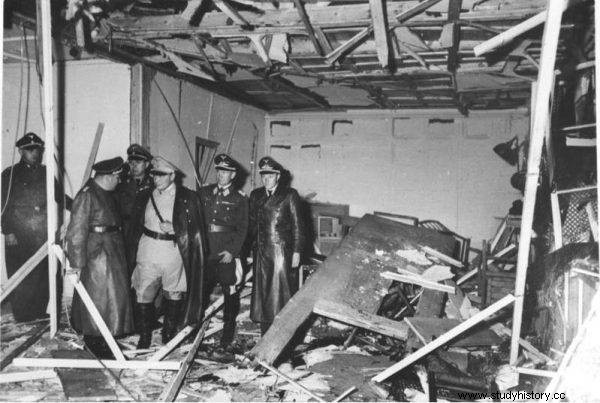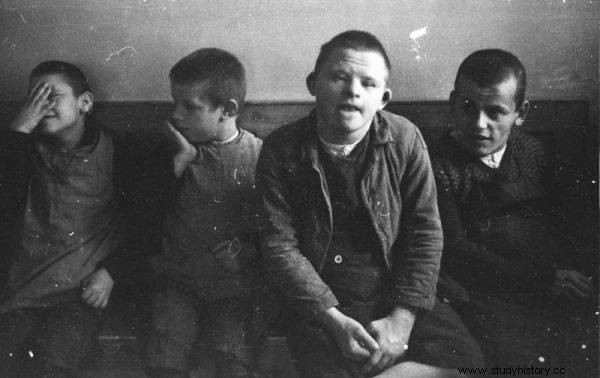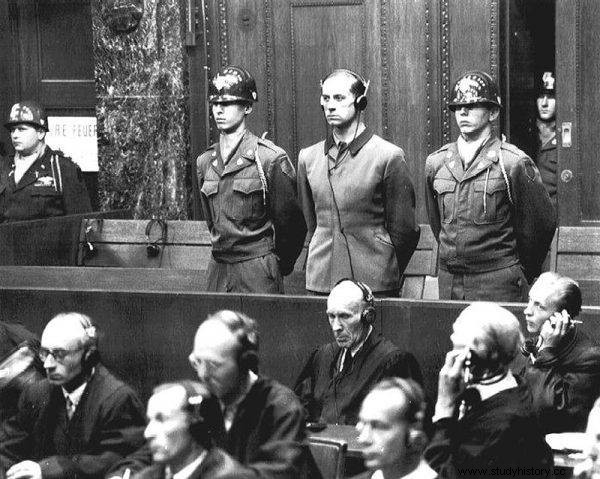He accompanied Hitler like a shadow. He did not leave him during the journey, ready to operate at any moment. The Führer's physician, Karl Brandt, was the initiator of the bestial experiments on people in concentration camps and the Nazi program of universal euthanasia for the disabled (the so-called Operation T-4).
Faithful companion
Karl Brandt made such an impression on Hitler that in 1934 he without hesitation entrusted him with the function of his companion doctor (Begleitarzt). Brandt readily agreed. As emphasized by the biographer of the Nazi doctor, Prof. Ulf Schmidt, was looking for an extraordinary figure to lean on that would inspire him to do great things. It fell on Adolf Hitler.
In the following years, he accompanied the dictator like a faithful dog. At his side, he visited German towns and villages. He was getting to know the party tops. In the book "Hitler's Doctors War" we read:
As a surgeon, Brandt was unnecessary. Until July 20, 1944, when Colonel Claus von Stauffenberg attacked Hitler's life, Hitler (while outside Berlin) never required immediate medical attention.

Until July 20, 1944, when Colonel Claus von Stauffenberg took Hitler's life, Hitler (while outside Berlin) never required immediate medical attention.
His job boiled down to ... being on hand, with a medical bag and a first aid kit "just in case". Hitler's adjutants also asked Brandt for help in medical matters - not only those related to the health of their employer. His career developed rapidly. 10 years after the medical examination, he became a professor of medicine due to the appointment of the Führer.
Interestingly, despite all the sympathy from Hitler, Brandt fiercely competed for the favors of "patient A" with his second personal medic, Theo Morell . As Bartosz T. Wieliński comments:"To say that doctors were in conflict is not enough."
"The grace of death"
In 1939, Karl Brandt finally turned to the dark side. In the book "Hitler's Doctors War" Wieliński describes:
In early October, when the last fires of resistance in Poland died out and the hell of occupation began in the conquered country, Brandt was summoned to Berghof. Subject of conversation:patients of psychiatric hospitals. "These poor creatures must be left alone," said Hitler. Peace, or "the grace of death". From then on it was clear that the planned action will not be limited to children only.

Brandt eagerly set about cleansing the Third Reich of "worthless life" - the operation went down in history as T4 operation and it is estimated that it claimed up to 250,000 lives.
The concept of the "grace of death" was well known to Brandt. Just a few months earlier, he positively assessed the application for euthanasia of a deformed newborn, the so-called The "child K", born without a leg and arm, was blind and suffered from epilepsy. His father tried to put him to sleep, "just as seriously ill dogs are put to sleep". Thanks to the decision of Hitler's personal physician, his will was done.
Brandt eagerly set about purging the Third Reich of "worthless life" - this operation went down in history as Operation T4 and it is estimated that it claimed up to 250,000 victims (this is how many people talked about during the Nuremberg trials). As he explained himself:
What we're going to do is a medical operation. Its purpose is to compensate for the death of valuable members of our nation, our comrades, in the war.
Ruler of life and death
Before it started, it was necessary to find the best way to kill "animals in human coats" - that is, the mentally ill. For Karl Brandt, it became a pretext to commit one more crime - conducting brutal experiments on people.
Although this monstrous practice was led by doctors in concentration camps, such as the infamous Angel of Death from Auschwitz, i.e. Josef Mengele. However, it was Hitler's personal medic who initiated the research on human guinea pigs.
From 1942 Karl Brandt - as the general commissioner - was in charge of the entire healthcare system in the Third Reich. He dreamed of creating a real health ministry in Germany and assuming power over all the doctors in the country (he actually held such a position, although the Führer did not ultimately establish a ministry with that name).
Eventually, however, he fell out of favor with Hitler. The aforementioned conflict with Morell contributed significantly to this. Brandt tried to convince his employer that his other medical assistant was trying to… kill him. However, the plot was unsuccessful and it was Brandt who was expelled from the dictator's immediate entourage.
"It was an order"
On April 16, 1945, the doctor was arrested by the SS. Reason? He took his family (in the meantime, he married Anni Rehborn and had a son with her) from falling Berlin, so that his relatives could surrender to the Americans. Sentenced to death, on May 2, he was released by order of Hitler's successor Karl Dönitz, only to fall into the hands of the British.

photo:public domain Karl Brandt during the Nuremberg trial.
Before the tribunal in Nuremberg, he defended himself against accusations (including running an euthanasia program, forced sterilization and "cruel, often fatal" experiences on concentration camp prisoners ), translating:
As a doctor and a human, I must admit that I cannot evade the charges of committing crimes against humanity, but what I was doing was an order and as a soldier I could not fail to do so.
The second time he received the death penalty - by hanging. The sentence was carried out on June 2, 1948 in Landsberg Prison.
